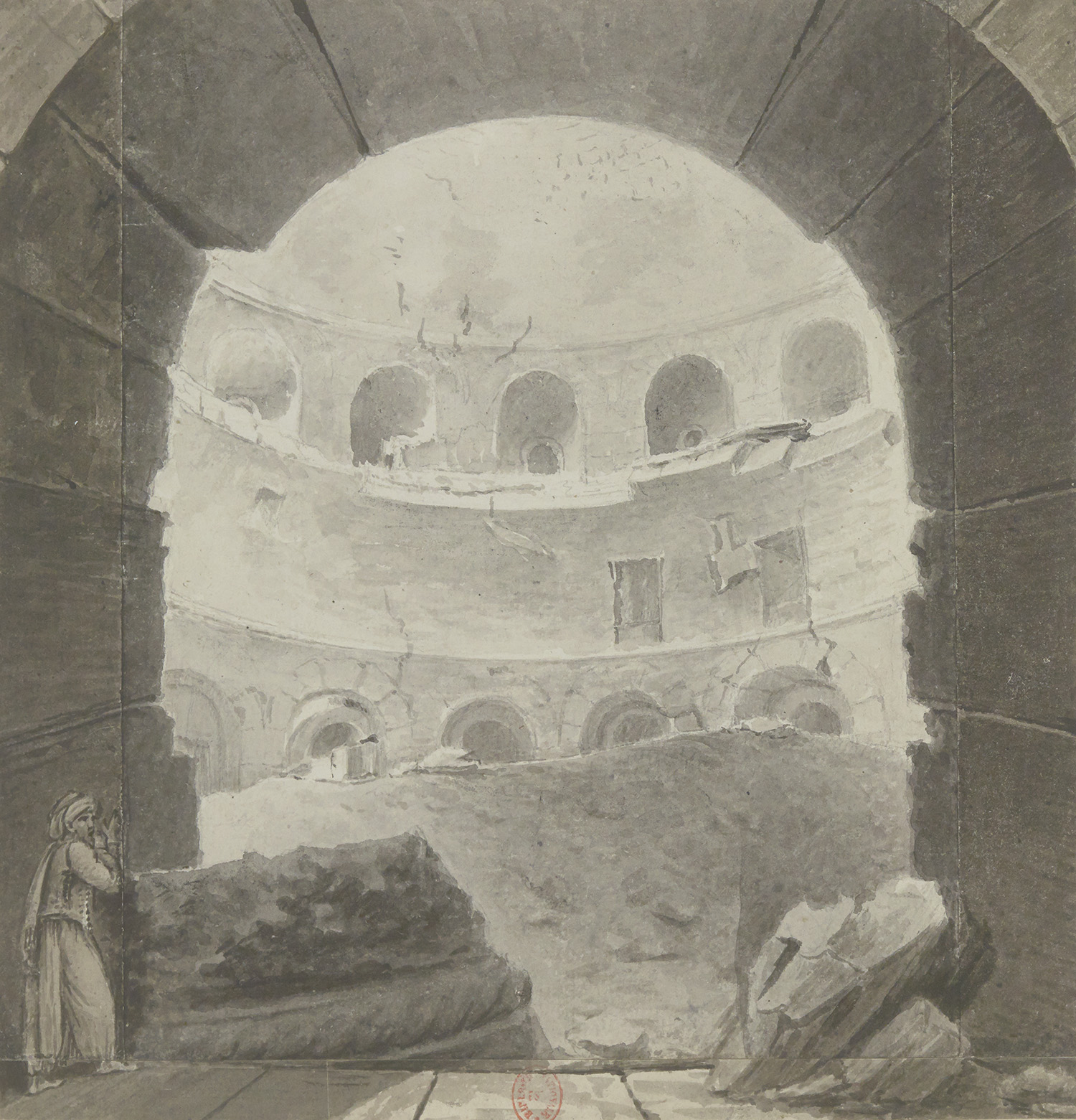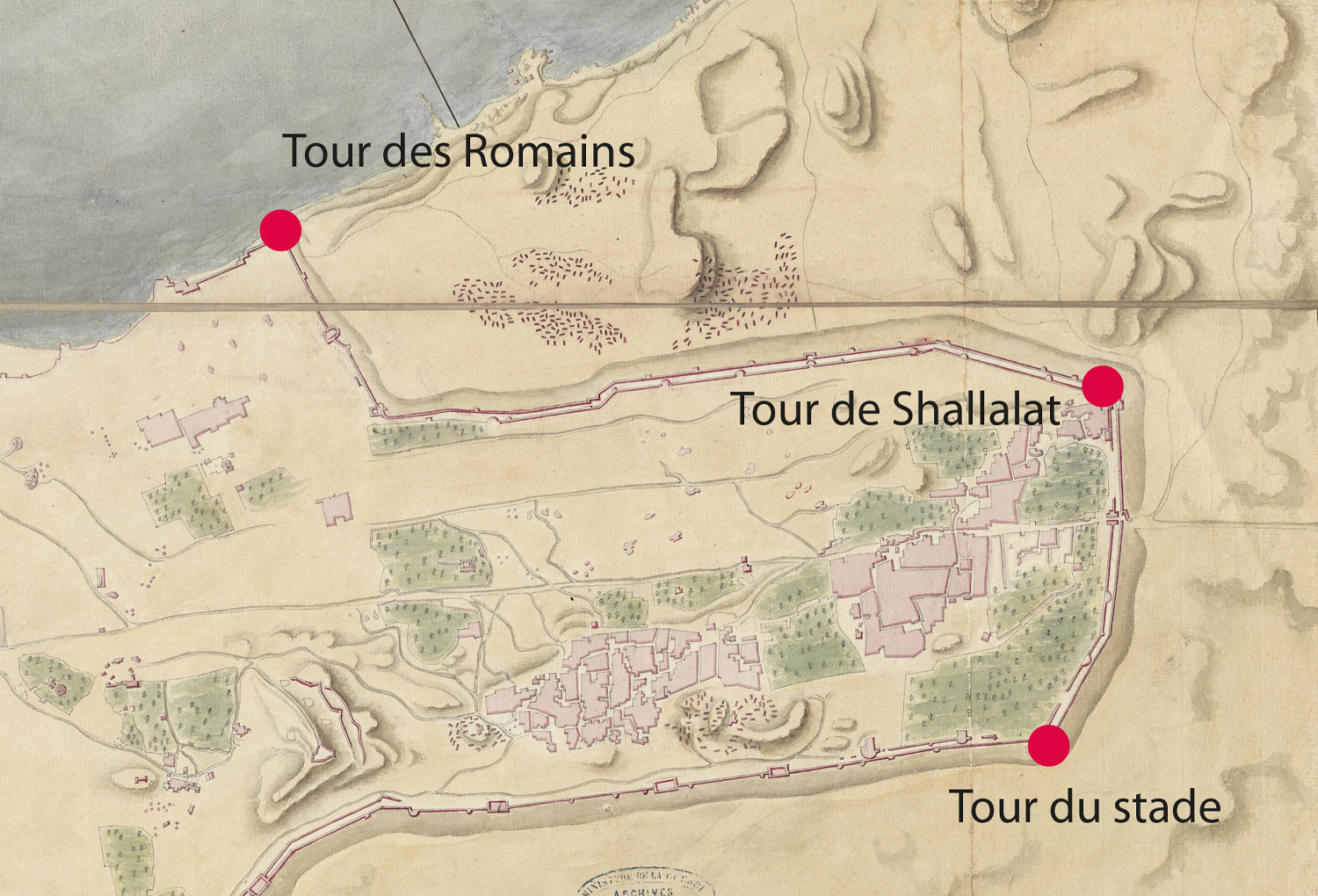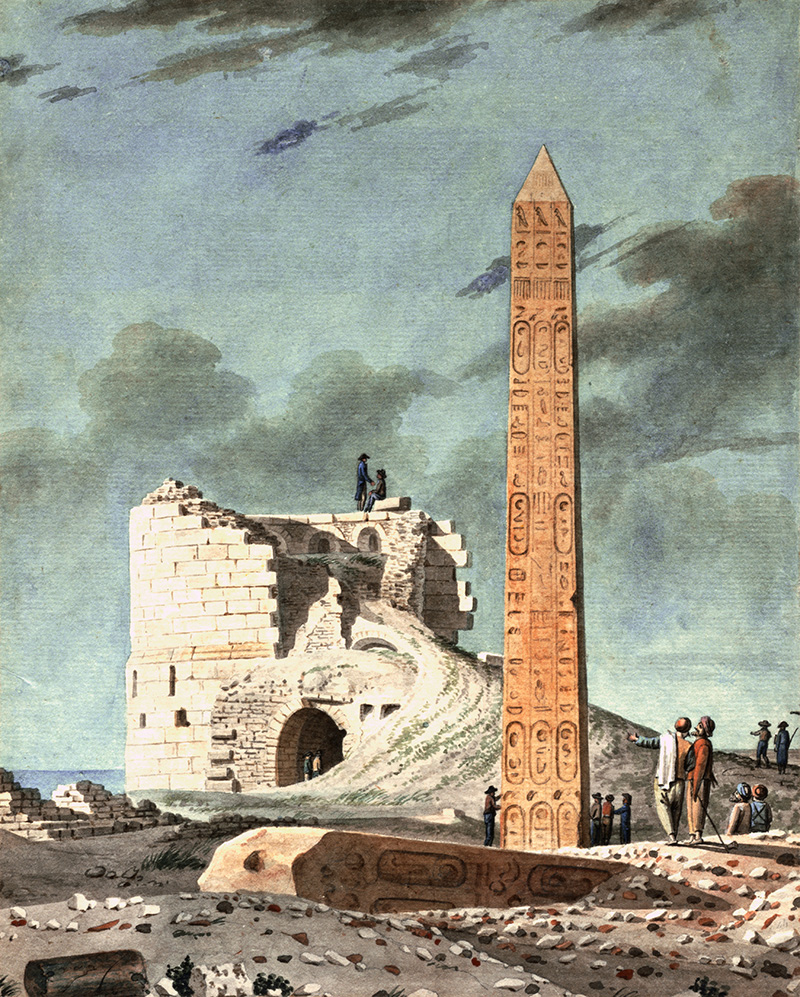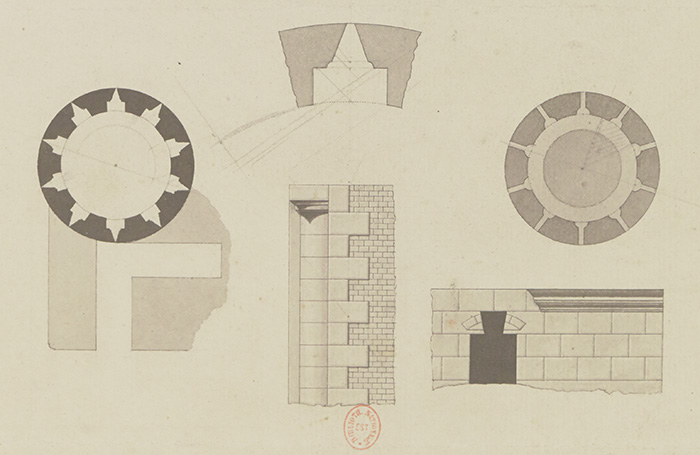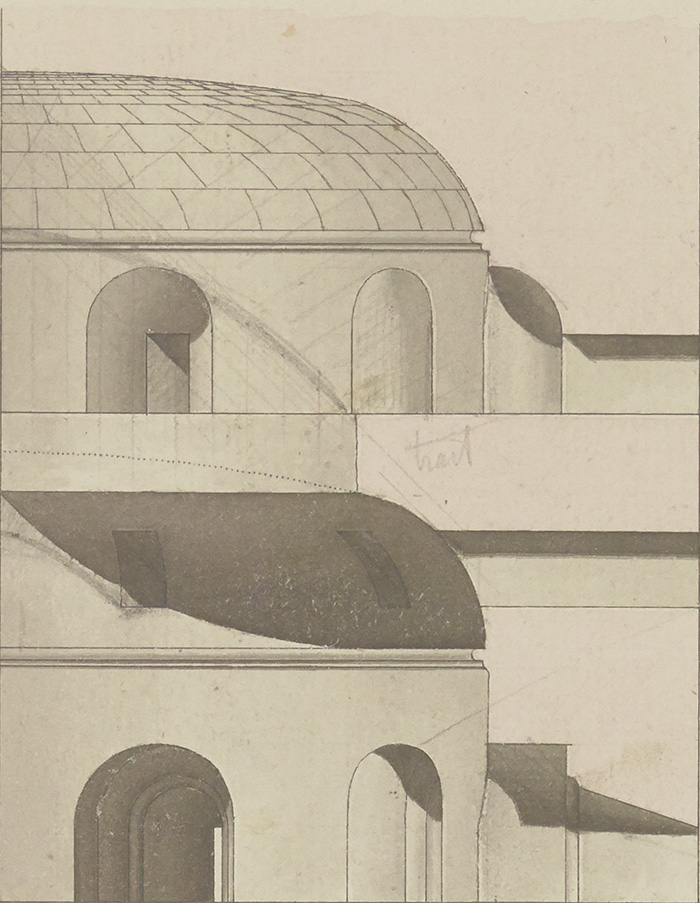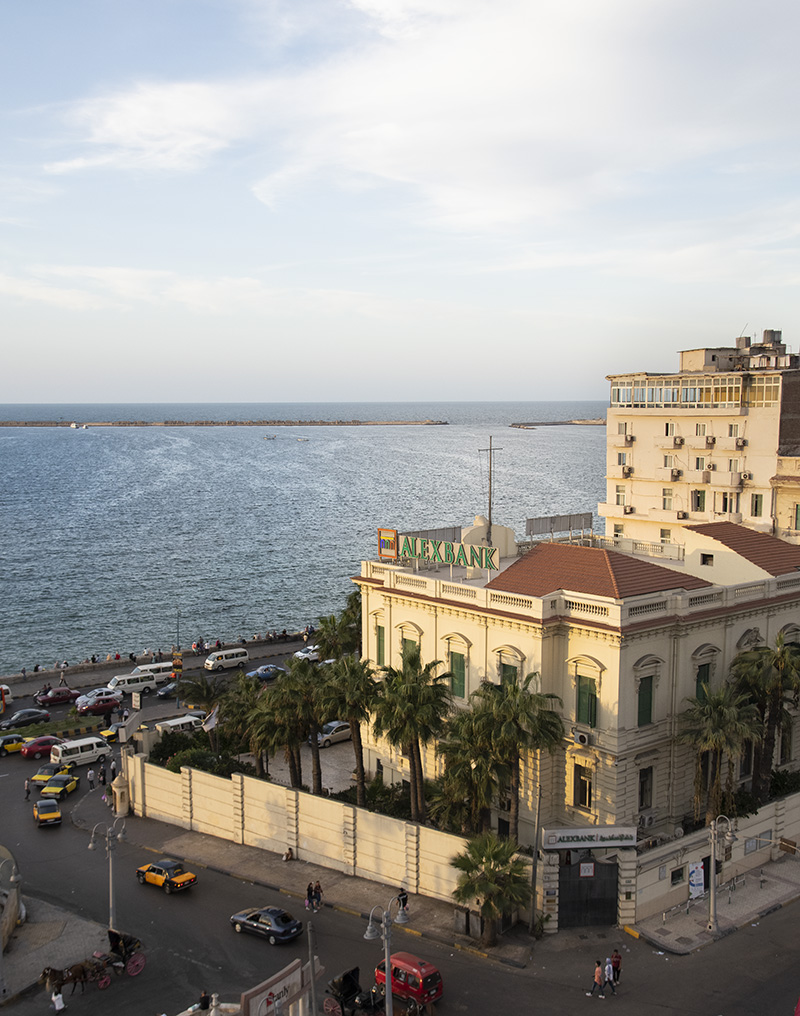Daily life
Attarine Pompey’s Pillar Tower of the Romans Cleopatra’s Needles Wardian Tomb Qaitbay Fort
“Interior view of a tower believed to be built by the Romans, for whom it is named. The floor of the chamber is filled by the ruins of one of the vaults, which appears to have collapsed a long time ago”, ink wash, Charles-Louis Balzac, Description de l’Égypte, Antiquités, Planches, Vol. 5, pl. 35.2
The Tower of the Romans was constructed in the 9th century at the north-east corner of the medieval defensive wall, on the shores of the Eastern Harbour, the “New Harbour” of the period. Its name derives from the Arabic term Roumi, which signifies Europeans and Christians in general. The tower was circular in plan and equipped with three rows of loopholes all the way around to ensure the defence of the landing stages of the Eastern Harbour. Although still standing at the beginning of the 20th century, the tower was removed as part of the urbanisation projects of cosmopolitan Alexandria. The Italian Consulate, now occupied by Alexbank, was built on its site. Currently, only two towers remain of the medieval walls, one in Shallalat Gardens and the other near the municipal stadium (1).
Detail from « Map of the city and harbours of Alexandria ». Watercolour, Louis-Jacques Bourgeois, circa 1799, 1/4,000
View of the Tower of the Romans Cleopatra’s Needles. Watercolour, Dominique-Vivant Denon, © Victoria and Albert Museum, London
“Section and details of the Tower of the Romans”, ink wash, pen, watercolour and pencil, Edme-François Jomard, Description de l’Égypte, Antiquités, Planches, Vol. 5, pl. 35.6
View of the Italian Consulate, now Alexbank, built on the site of the Tower of the Romans, October 2021. Photo Étienne Forestier

